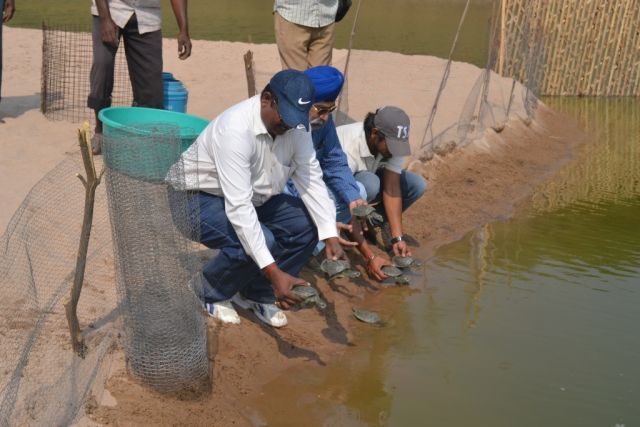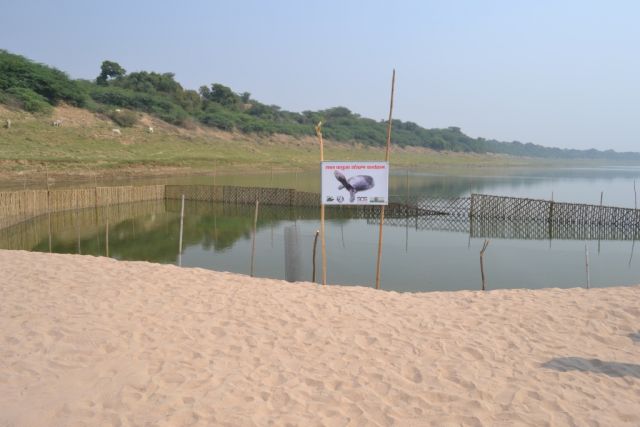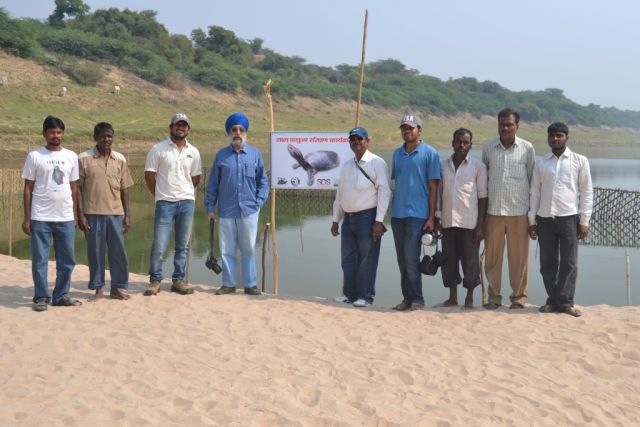Wild Turtle Populations Boosted in India
by Heather Lowe- 
The TSA India team experienced another successful season this year for the red-crowned roof turtle (Batagur kachuga) nest protection project in the National Chambal River Sanctuary. An average emergence rate of 90% has been observed from 800 Batagur nests that were protected across three hatcheries. In actual numbers, this translates into nearly 15,000 hatchlings!
Of these, 200 hatchlings were retained at headstarting facilities at the Deori Eco-Centre and Garhaita Turtle Centre on the middle and lower Chambal respectively. Here, they will be raised in captivity for a year or more, allowing them to grow to a size where they are less susceptible to predation. The rest were released in the area where they hatched, boosting wild population numbers. Prior to the TSA's nest protection programs in these areas, nearly 100% of the nests were predated by jackals and other predators.
To achieve this level of success, dedicated workers are stationed at the Chambal River field sites 24 hours a day from the start of nesting season until the last nest is hatched. They collect eggs every day from nests that are laid and carefully transport them to the protected area where they can incubate, safe from egg-eating predators. Accommodations are quite rustic, especially in the heat of summer, which serves as a testament to their dedication. Temperatures up to and over 110°F are almost a daily occurrence.
Recently, following a health assessment by our veterinary officer, 168 B. kachuga yearlings from our headstarting facility in Garhaita were 'soft' released near the nesting beaches where they were collected last year. They will be held in pens constructed in the river (shown, middle) until May, providing them six months to acclimate and to encourage site fidelity (remaining in the same general area where they are released). When they are released in May, a cohort of the group will be tracked using radio telemetry. The data obtained from this study will allow the team to evaluate the effectiveness of headstart and release as conservation technique for this species and others like it. The team continues to obtain locations from six of our ten telemetered B. kachuga that were released last year as part of the same research project. Additional surveys from further upstream are also planned in an effort to locate more tagged individuals.



